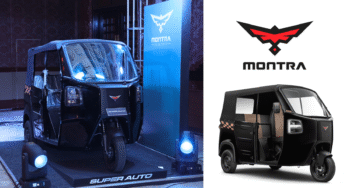The Government of India is continuously showing its support to develop India as a global leader in the EV sector. Several schemes and incentives have been launched by the government to boost the demand for electric vehicles as well as motivate manufacturers to invest in the R&D of electric vehicles and related infrastructure.
The government of India has launched so far – FAME-II, PLI SCHEME, and Battery Swapping Policy, Special Electric Mobility Zone, Tax Reduction on EVs.
Following are the government Policies and incentives for electric vehicles in India.
FAME-II
The FAME India initiative was launched on April 1, 2015, by the Indian government to reduce the usage of petrol and diesel automobiles. This scheme was an essential part of electric mobility in India. The FAME India Scheme aims to incentivize all types of vehicles.
The four focus areas of the Fame India Scheme are as follows:
- Demand for technology,
- Pilot Projects,
- Technology development,
- Infrastructure for Charging.
The FAME II scheme was introduced in April 2019 with a budget outlay of Rs 10,000 crore to support 5,00,000 e-three-wheelers, 7,000 e-buses, 55,000 e-passenger vehicles, and a million e-two-wheelers. The aim was to drive greater adoption of EVs in India.
The scheme was supposed to end in 2022. But now, In the budget for FY2022-23, the Government of India has decided to extend the FAME-II scheme till 31 March 2024.
PLI SCHEME
In June 2021, The Department of Heavy Industry launched the Production Linked Incentive for Advanced Chemistry Cell Battery Storage (PLI-ACC Scheme). Its goal is to entice domestic and international investors to invest in India’s Giga scale ACC manufacturing facilities. The PLI-ACC Scheme is one of thirteen initiatives sanctioned by the Union Government to support the Prime Minister’s goal of “Atmanirbhar Bharat.”
The scheme’s overall pay-out is INR 18,100 crore. This will be paid across five years after the production facility is operational. The policy stipulates that the manufacturing facility must be operational within two years to be eligible for subsidies, and the Bid Documents go on to say that a 60 percent domestic value addition must be achieved within five years after that.
Many small and mid-sized businesses that manufacture EV batteries and car parts are unable to apply for the scheme’s benefits due to stringent selection requirements. Smaller firms are critical in closing the demand-supply imbalance in the industry. Modifying present standards or proposing a substitute to make the plan a viable choice for these businesses will improve the EV community.
Battery Swapping Policy
The Finance Minister stated that the government intends to introduce a Battery Swapping Policy. This scheme will standardize the standards of batteries to be used in EVs across India. The legislation will help in promoting EVs in time-sensitive service sectors like deliveries and inter-city transportation as swapping a drained battery for a fully charged one is a more practical option than on-the-spot recharging, which can take hours.
This will make interoperability easy. If all the batteries are of the same configuration for all the same categories of EV, buyers need not worry while swapping their batteries and be concerned about the configuration of new batteries being put in.
If performed well, battery switching is expected to achieve acceptance in commercial applications such as 2W and 3W vehicles and will aid faster penetration in these segments.
Read More- Battery Swapping Stations Cost and Companies in India
The Battery Swapping Policy will also benefit the manufacturers. Once the standards come into play, spare parts of machinery will also be more easily available. Furthermore, by leveraging economies of scale, this approach will assist battery producers in lowering costs.
Duty Reduction on Electric Vehicles
The budget includes a proposal to lower customs duties on Nickel ore and concentrates from 5% to 0%, Nickel Oxide from 10% to 0%, and Ferro Nickel from 15% to 2.5 percent. Nickel Manganese Cobalt (NMC) is a vital part of lithium-ion batteries, which are utilized in electric vehicles (EVs).
India has limited reserves of these ores and battery manufacturing is highly dependent on them. Hence, nickel alloys are mostly imported. The customs tax decrease will help local EV battery producers lower production costs.
There is also a proposal for a reduction in customs duty on motor parts from 10% to 7.5 percent will help to lower the overall cost of EVs.
Special E-mobility Zone
The government plans to establish dedicated mobility zones for electric vehicles. Only electric vehicles or comparable vehicles will be permitted to operate in the zones identified by the administration. Such policies are prevalent in many European countries and China.
The hidden benefit of special Electric mobility zones will be that they will help curb overcrowding due to private vehicles. People moving through these zones need to travel in their EV of their own or take a public EV vehicle, thus increasing the market share of EVs.
Summary
People are enthusiastic about electric vehicles across regions, industries, and philosophies. EVs will become a trillion-dollar industry in the future, while also helping to rescue the environment.
Electrifying vehicles in developing nations is critical to decarbonizing transportation soon, given their large number and popularity. As a result, the government’s participation becomes critical. When it comes to government subsidy programs, the effects of incentives are very visible.
Government incentives aren’t the only way to boost electric vehicle sales. Manufacturers, as well as modifying customer behavior, have practical implications, as previously stated. Successful measures demonstrate how governments can assist in addressing these challenges. We hope that the government’s measures would enable India to continue on its road toward a greener future.

